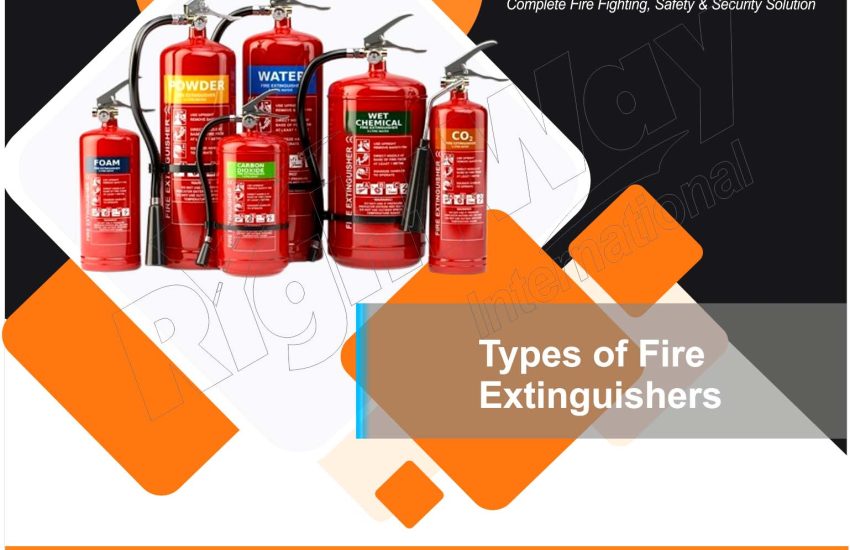Types of Fire Extinguishers are crucial safety devices designed to combat small fires and prevent them from escalating into larger emergencies. Understanding the different types of fire extinguishers is essential for effective fire safety. Here’s an overview of the most common types:
1.Types of Fire Extinguishers Water Extinguishers (Class A)
Description: These extinguishers use water to cool down burning materials.
Use: Effective for Class A fires, which involve ordinary combustibles such as wood, paper, and textiles.
Limitations: Not suitable for electrical fires, flammable liquids, or cooking oils, as water can spread the fire or cause electrocution.
2.Types of Fire Extinguishers Foam Extinguishers (Class A and B)
Description: Foam extinguishers create a barrier between the fuel and the fire, suffocating it.
Use: Suitable for Class A (ordinary combustibles) and Class B (flammable liquids) fires.
Limitations: Not effective on electrical fires or reactive metals.
3.Types of Fire Extinguishers Dry Powder Extinguishers (Class A, B, C, and F)
Description: These extinguishers disperse a fine powder that smothers the fire.
Use: Versatile, effective for Class A, B, C (gaseous fires), and F (cooking oils) fires.
Limitations: Can create visibility issues and may be corrosive to certain metals.
4. Carbon Dioxide (CO2) Extinguishers (Class B and C)
Description: CO2 extinguishers displace oxygen, effectively suffocating the fire.
Use: Ideal for Class B and C fires, particularly in electrical equipment.
Limitations: Less effective on Class A fires and can be ineffective in confined spaces due to the risk of re-ignition.
5. Wet Chemical Extinguishers (Class F)
Description: These extinguishers contain a solution that cools and emulsifies cooking oils.
Use: Specifically designed for Class F fires, which involve deep-fat fryers and other cooking oils.
Limitations: Not suitable for other types of fires.
6. Clean Agent Extinguishers (Class B and C)
Description: These use gaseous agents like halon or FM-200 to extinguish fires without leaving residue.
Use: Effective for Class B and C fires, particularly in sensitive environments like data centers and server rooms.
Limitations: Generally more expensive and may have environmental regulations regarding their use.
Conclusion
Selecting the right type of fire extinguisher is vital for effective fire safety. Always ensure that fire extinguishers are easily accessible, regularly maintained, and that individuals are trained in their use. Understanding these types can help you respond effectively in case of a fire emergency. Stay safe!


